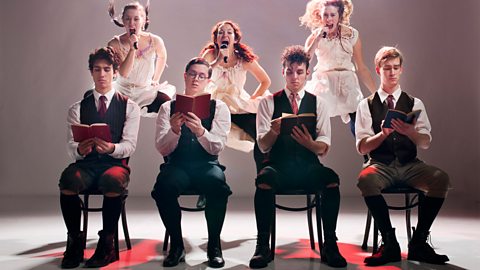Lighting, levels and space
Lighting
Stage lighting has a variety of functions such as:
- indicating time or location
- being used in an abstract or symbolic way to communicate a message
- being used to direct the audienceâs focus towards a particular character or section of action
- creating mood and atmosphere to enhance a play and the audienceâs experience of it
Of course, itâs essential that performers can be seen. Lighting is a very technical area and itâs important to know what different lights do because the effect created by each one is different. The angle at which lights are hung is important too as this can affect the creation of any shadows.
Look at Theatre design for more information about using different types of lights and the role of the lighting designer.
Levels

Using different heights or levels onstage creates visual interest. It can also help to ensure that the audience see all of the action. Levels can be used to suggest status - meaning the power or authority one character has over another. Itâs important to consider what the use of levels suggests when staging a scene.
Levels can also be used to suggest various locations. For example, a raised platform might act as an interior room, whereas the ground level in front represents the street.
Space
The space where the actors perform is referred to as the stage. Sometimes this is a traditional raised platform, but not always. It might be on the same level as the audience or even just a corner of a hall or room. The type of stage chosen affects the relationship created between performers and audience and can have a significant impact upon a piece of drama. Look at Using the space for more information about the different types of stages you can use.
The way the space is used is important and space between characters onstage often says something about their relationships and emotions. This is called proxemics. The way that actors use the space is important. Some places on the stage are stronger than others and draw focus to the action more effectively. Actors and directors must consider this when planning use of space.